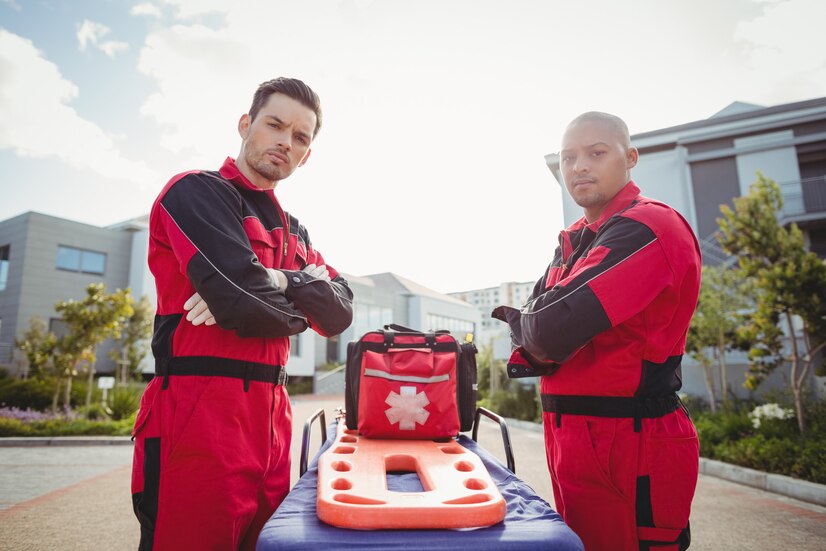Imagine this: you’re enjoying a hike with friends when someone takes a tumble and twists their ankle. Or, maybe you’re having a backyard cookout when a bee decides to join the party – in your arm. In these situations, staying calm and knowing what to do can make all the difference. That’s where first aid comes in.
First aid is the initial care given to a sick or injured person until professional medical help arrives. It’s not about becoming a doctor, but about having the knowledge and skills to handle common emergencies. This blog post will equip you with the essentials of first aid, shed light on common injuries, and guide you on how to be prepared for unexpected situations.
So, grab a cup of tea, settle in, and let’s empower ourselves to be helpful bystanders!
First Aid for Common Injuries: Be a Hero in Your Everyday Life
Here are some frequently encountered injuries and basic first aid tips to address them:
- Cuts and Scrapes: These are minor skin breaks that usually bleed a little. The key here is to stop the bleeding and prevent infection. Wash the wound gently with clean water and mild soap. Apply gentle pressure with a clean cloth or gauze pad to stop the bleeding. Once the bleeding stops, cover the wound with a sterile bandage.
Real-life Example:
You’re helping your child build a sandcastle at the beach when they scrape their knee on a seashell. Wash the wound with clean seawater (if available) or bottled water. Apply gentle pressure with a clean cloth or tissue to stop the bleeding. Once the bleeding stops, put a bandage on the scrape.
- Sprains and Strains: Sprains involve stretched or torn ligaments, while strains affect muscles or tendons. Both cause pain, swelling, and difficulty moving the affected area. The RICE principle (Rest, Ice, Compression, Elevation) is your friend here. Rest the injured area, apply ice wrapped in a cloth for 15-20 minutes at a time (never directly on the skin), use a compression bandage to reduce swelling, and elevate the injured limb above the heart.
Example: You’re playing basketball when you land awkwardly and twist your ankle. Stop playing immediately. Sit down, elevate your ankle above your heart, and apply ice wrapped in a towel.
- Choking: This is a life-threatening emergency where a foreign object blocks the airway. If an adult is choking and can’t speak or cough effectively, perform the Heimlich maneuver. Stand behind the person, wrap your arms around their waist, make a fist with one hand just above their navel, grab your fist with your other hand, and thrust upwards sharply. Repeat until the object dislodges.
Remember: Don’t attempt the Heimlich maneuver on an infant or a pregnant woman. Call emergency services immediately and follow their instructions.
- Burns: These can be caused by heat, chemicals, electricity, or sunlight. The severity depends on the depth and size of the burn. For minor burns, cool the area with running cool water for 10-15 minutes. Avoid using ice, butter, or ointments. Cover the burn with a loose, sterile bandage. For serious burns, seek immediate medical attention.
Example: You’re cooking dinner and accidentally splash hot oil on your arm. Immediately turn off the heat and run cool water over the burn for 10-15 minutes. Cover the burn with a loose, sterile bandage and call a doctor if the burn appears serious.
Life-Saving Techniques: Think Simple, Act Fast
Here are some crucial life-saving techniques everyone should be familiar with:
-
CPR (Cardiopulmonary Resuscitation): This lifesaving technique involves chest compressions and rescue breaths to keep oxygenated blood circulating in the body when someone’s heart stops beating. While formal CPR training is highly recommended, learning basic CPR can make a difference in an emergency.
-
AED (Automated External Defibrillator): These portable devices can analyze a person’s heart rhythm and deliver an electric shock if needed to restore a normal rhythm. Many public places have AEDs readily available. If you see someone collapse and suspect cardiac arrest, call emergency services immediately and check if an AED is nearby.
-
Recognizing Stroke Symptoms: Time is critical when it comes to strokes. Remember the acronym FAST:
- Face drooping
- Arm weakness
- Speech difficulty
- Time to call emergency services
If you notice any of these signs in yourself or someone else, call emergency services immediately.
